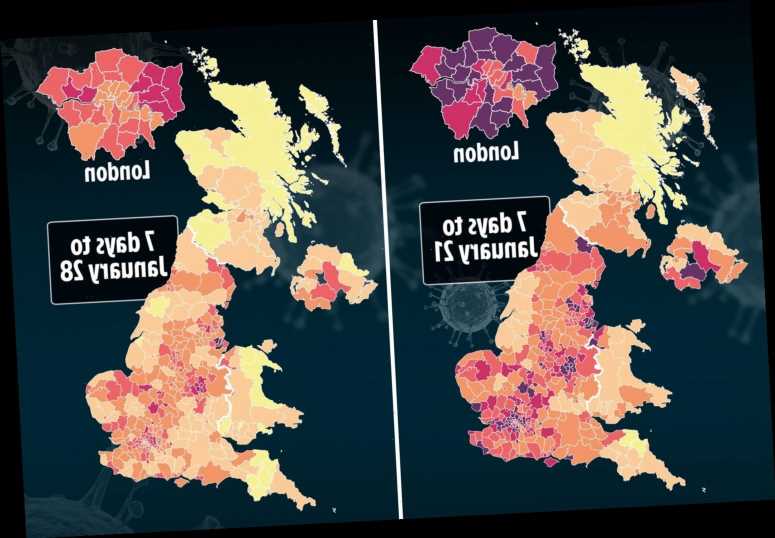There’s an incredible, immediate intimacy in opening your phone, seeing that someone is live on Instagram, and clicking over to see their face staring straight into yours. Even as the comments and emoji reactions scroll by at a frantic pace, joining these videos can seem like an intrusion — as if you didn’t mean to call someone but now that you have, you might as well stick around and see what they have to say.
On Jan. 13, a week after furious insurrectionists stormed the Capitol building, Rep. Alexandria Ocasio-Cortez went live on Instagram to recount her experience in the wake of the event — or at least as much of it as she could, legally and emotionally speaking. Gazing directly into her phone’s camera as comments flew by, Ocasio-Cortez spoke for a full hour about realizing the extent of the threat, feeling unsafe alongside Republican colleagues she couldn’t trust, and her growing anger at those who had incited it. She promised her hundreds of thousands of viewers more information soon, but until then, she could at least say that she was afraid she was “going to die.” Cortez made good on her promise almost three weeks later, going live on the evening of Feb. 1 to give such a detailed account of her harrowing day that she spoke for 90 minutes. Before she dove into the main event, however, she paused to reveal that she’d wrestled with the inevitability of not being believed, since she’d experienced the same as a survivor of sexual assault. Delivered straight to camera with an unmistakable hitch in her voice, it feels like witnessing a confession not from a politician, but from a friend who’d been steeling herself to share this truth all along.
As free-flowing and unscripted as her subsequent monologue was, Ocasio-Cortez made a deliberate, canny decision in making this stunning statement on Instagram Live instead of the floor of the House or in an op-ed. As many YouTubers, streamers and independent radio hosts have learned over the years, there’s a power in broadcasting straight to your own curated audience without worrying about a middleman muddying the message. But 31 year-old Ocasio-Cortez still uses her digital platform differently than most — especially, notably, from those on the opposite side of the political spectrum who have created empires out of direct-to-consumer internet broadcasts. While conservative shock jocks like Alex Jones and Rush Limbaugh or snide internet pundits like Ben Shapiro and Tomi Lahren run on loud graphics and disdain, Ocasio-Cortez most often settles into a lo-fi, straightforward approach that radiates calm rather than fury. FDR had Fireside Chats to reassure and inform his public; AOC has Instagram Live.
As a medium, Instagram Live has never been as popular as it’s been throughout these stir-crazy pandemic days; the astronomical popularity of Versuz alone proves the unbeatable entertainment value of watching talented people make the most of their scrappy home setups in real time. Ocasio-Cortez, however, has been using Instagram Live since the early days of her congressional tenure. Shortly after she first got elected, Ocasio-Cortez would prop her phone on her kitchen counter to chat policy while making mac and cheese, or set it on her living room floor to take questions while building IKEA furniture for her new congressional apartment. These peeks behind the congressional curtain are deliberately casual counterpoints to the images of representatives we usually get to see on TV, whether buttoned-up and poised at a lectern or shellacked in cable news makeup to share their thoughts with a solemnly nodding pundit. (This holds doubly true when she joins live games of “Among Us” on Twitch, a highly unusual digital arena for a Congressperson that most of her colleagues wouldn’t recognize at all.)
In making herself this accessible, Ocasio-Cortez purposefully upends the traditional image of the Washington politician who’s typically buffed and polished within an inch of their life. By simply turning on her phone after work hours, Ocasio-Cortez invites people into her home as if she’s just FaceTiming to say hi and let you know what’s going on at work. Even when Trump tried to bring himself down to earth with buckets of KFC and piles of tinfoil-wrapped burgers, he was almost always posing for the photo opp from a private plane or the gilded White House dining room. He wasn’t a “typical” president, but he still purposefully portrayed himself as a cut above his constituents. When Ocasio-Cortez streams live from her cramped kitchen in a comfy sweater, she’s highlighting her similarities with those she represents instead of emphasizing the gulf between them.
By the time Ocasio-Cortez went live on Feb. 1, she knew what she was doing — and that she had earned enough of a familiarity with her audience to drop such a personal revelation without entirely shocking it. She knew that certain moments would inevitably get dissected (and mocked) more than others, but also that she’s figured out a way to keep many thousands of people engaged with a 90-minute monologue about responsibility and justice that would prove hard to ignore. And if you’re one of those viewers who watched more than a couple scattered moments, you could recognize something crucial that those who cherry-picked wouldn’t.
While the bulk of her latest Live is dedicated to breaking down how she personally experienced the violent chaos of Jan. 6, Ocasio-Cortez nonetheless bookends it by speaking directly to her audience about how “trauma[s] compound on each other.” After offering up such a viscerally painful fact of her own life at the beginning, she quickly broadens the example to include everyone she might be speaking to, acknowledging that they’re probably carrying their own specifically harmful trauma. “All of our experiences make us who we are,” she says, in a firm but reassuring tone. “There is a community of so many people who can understand.” Even before she’s even started to tell her story of the insurrection, Ocasio-Cortez makes it not just about herself, but about everyone who’s ever lived through a trauma and had others dismiss it as unimportant.
Then, well over an hour later, she takes the time before signing off to encourage both her viewers and peers in Congress to own and tell their stories, the better to combat any malicious efforts to minimize them. “If you’ve experienced any trauma,” Ocasio-Cortez says to the camera, her hand resting on her heart, “I hope you know that you don’t need to have experienced the worst thing or the biggest thing. If you’ve experienced something, talk to someone about it. Acknowledge it in your heart.” In this moment, she wraps a plea and a salve into one smart sentence, makes eye contact through her phone, and speaks it from one bruised person to another. It’s not just an effective piece of messaging, but an extraordinary moment of empathy, broadcast live for everyone to share.
Source: Read Full Article

